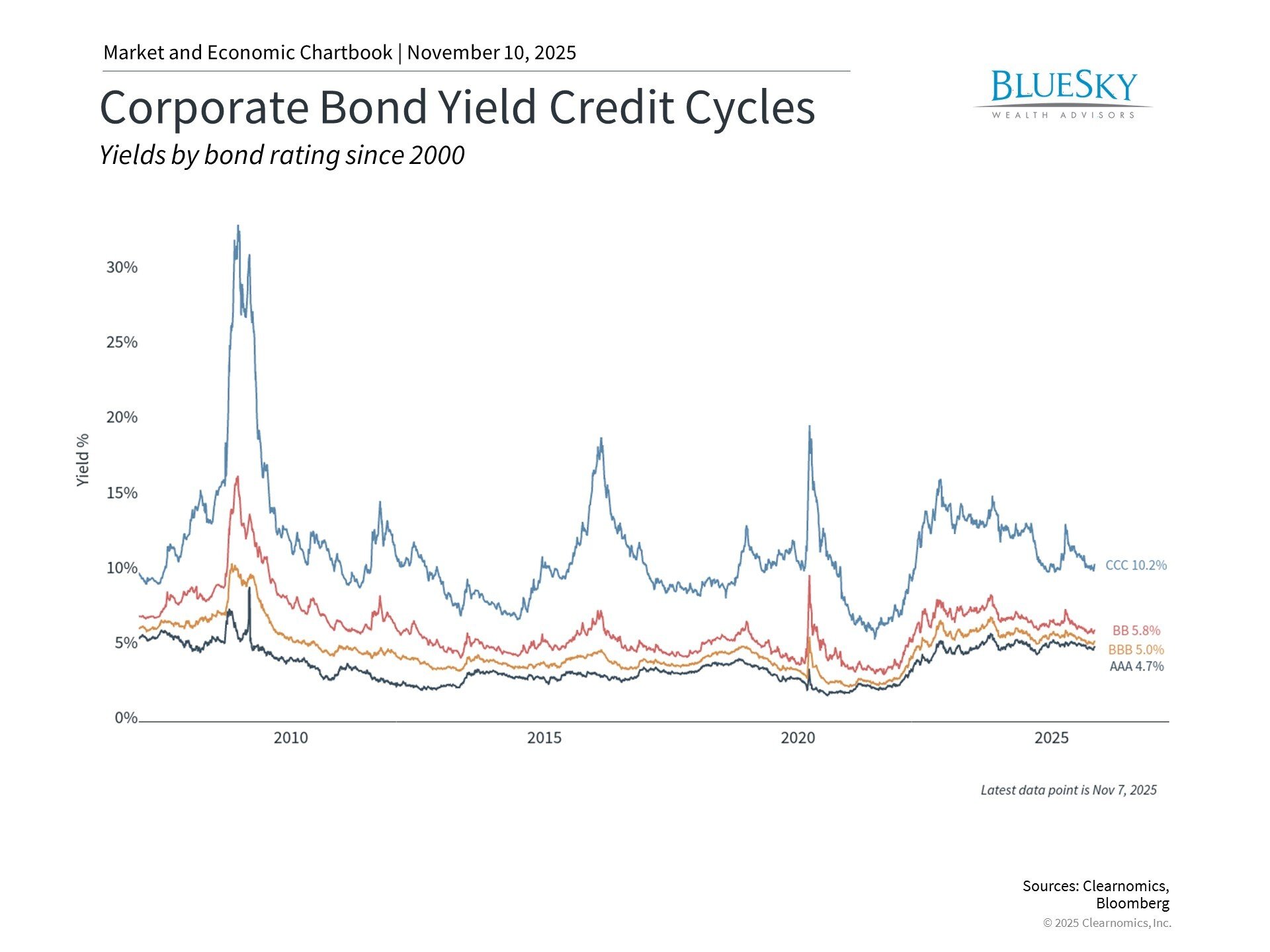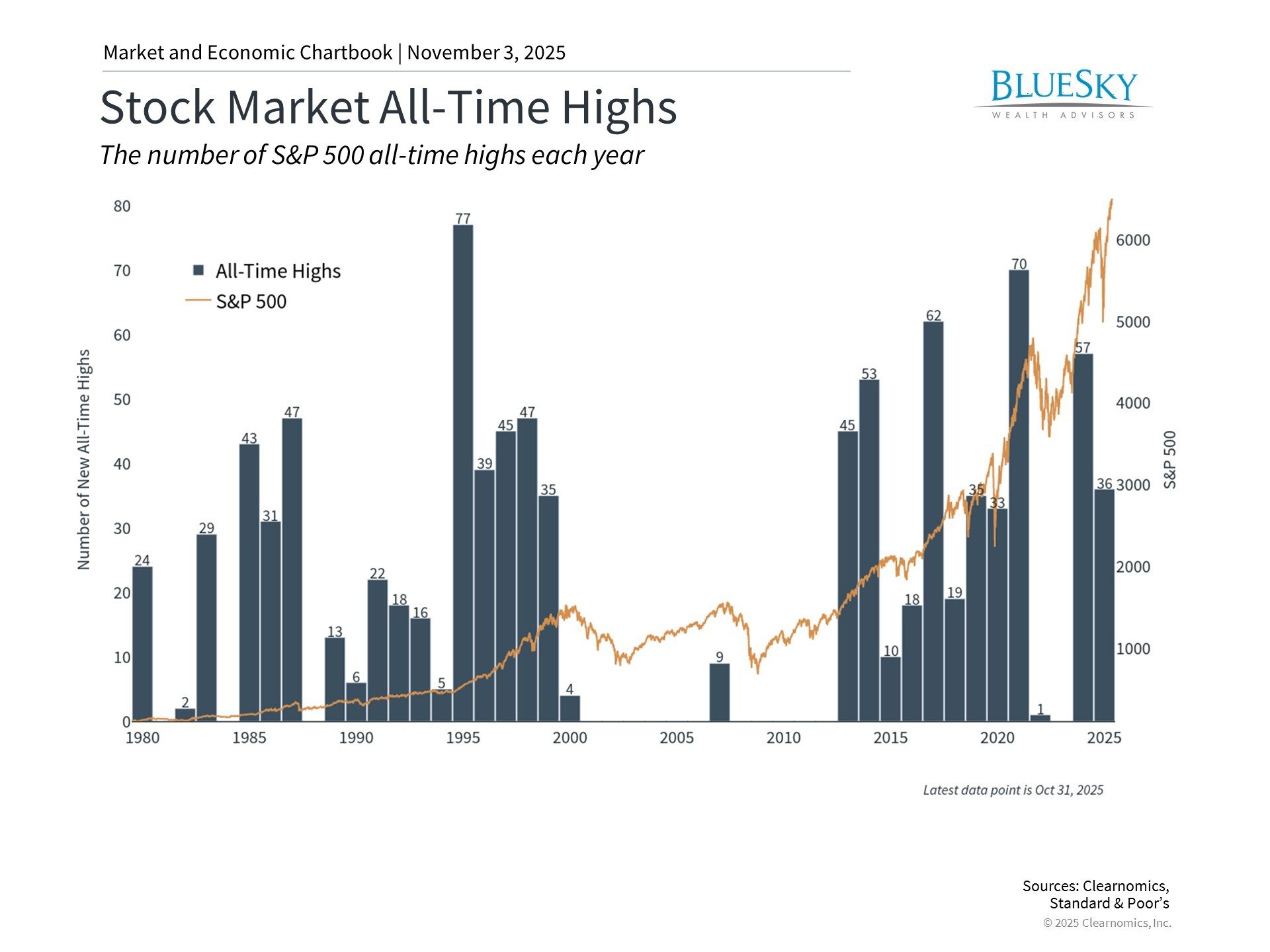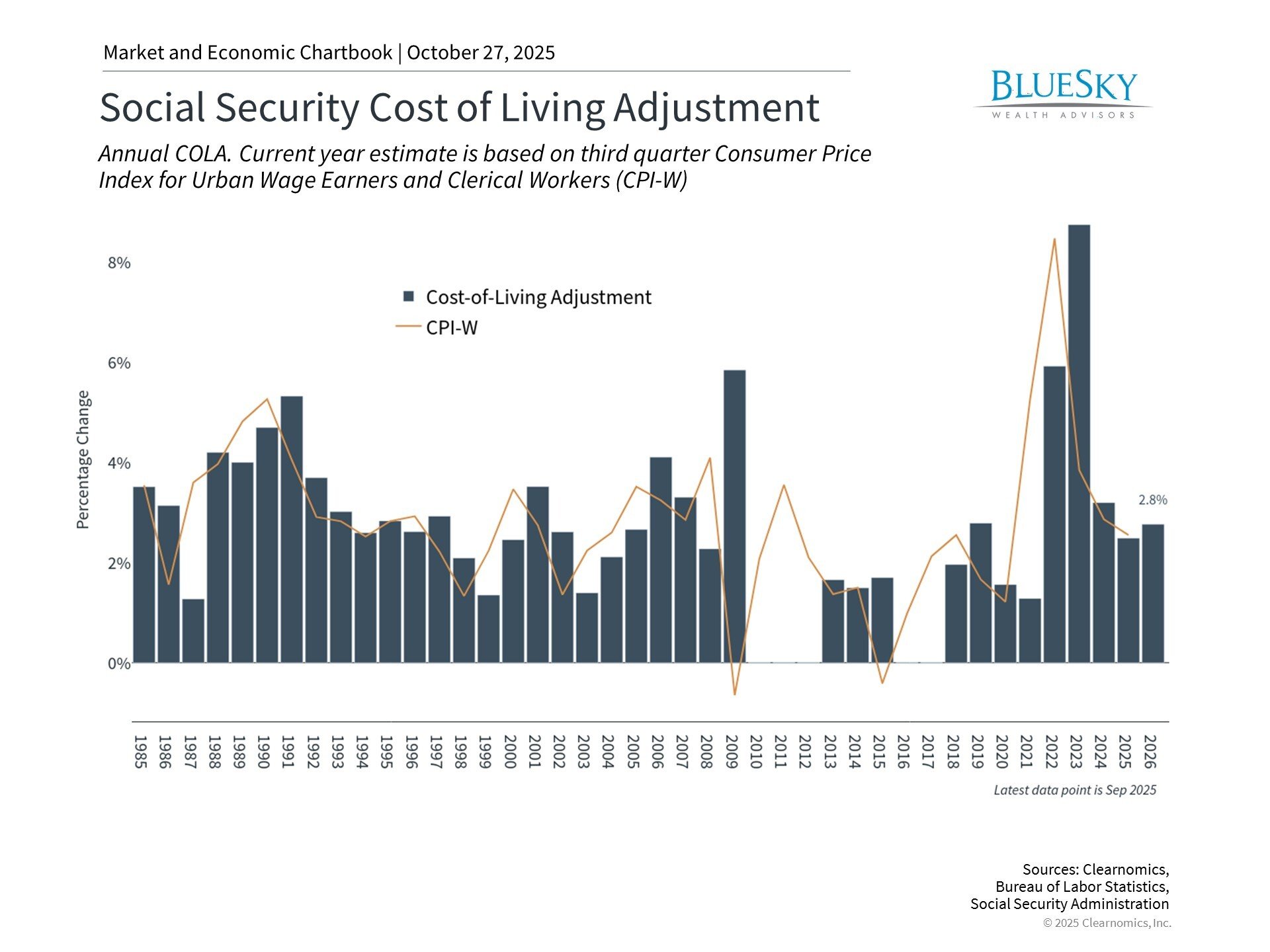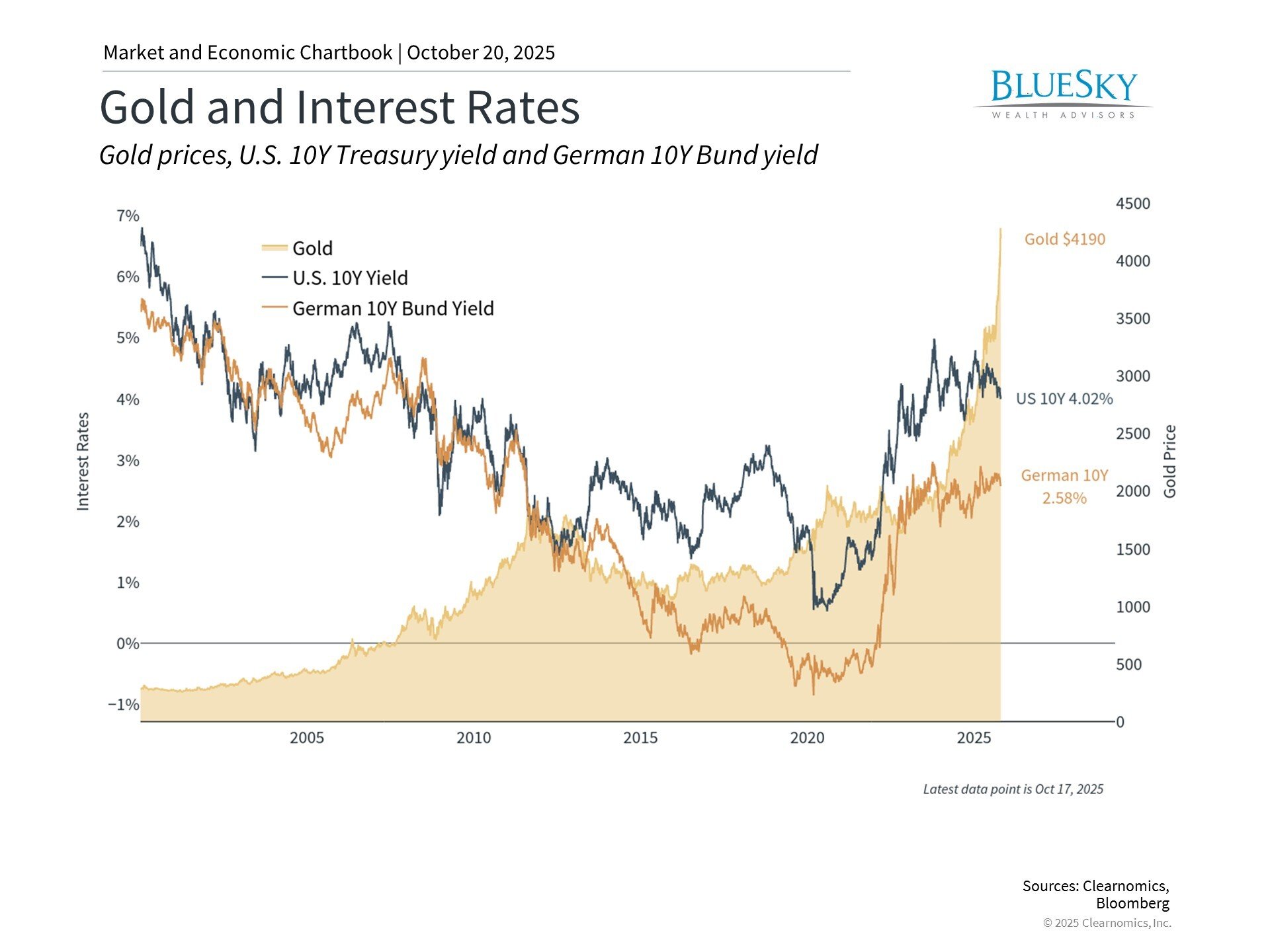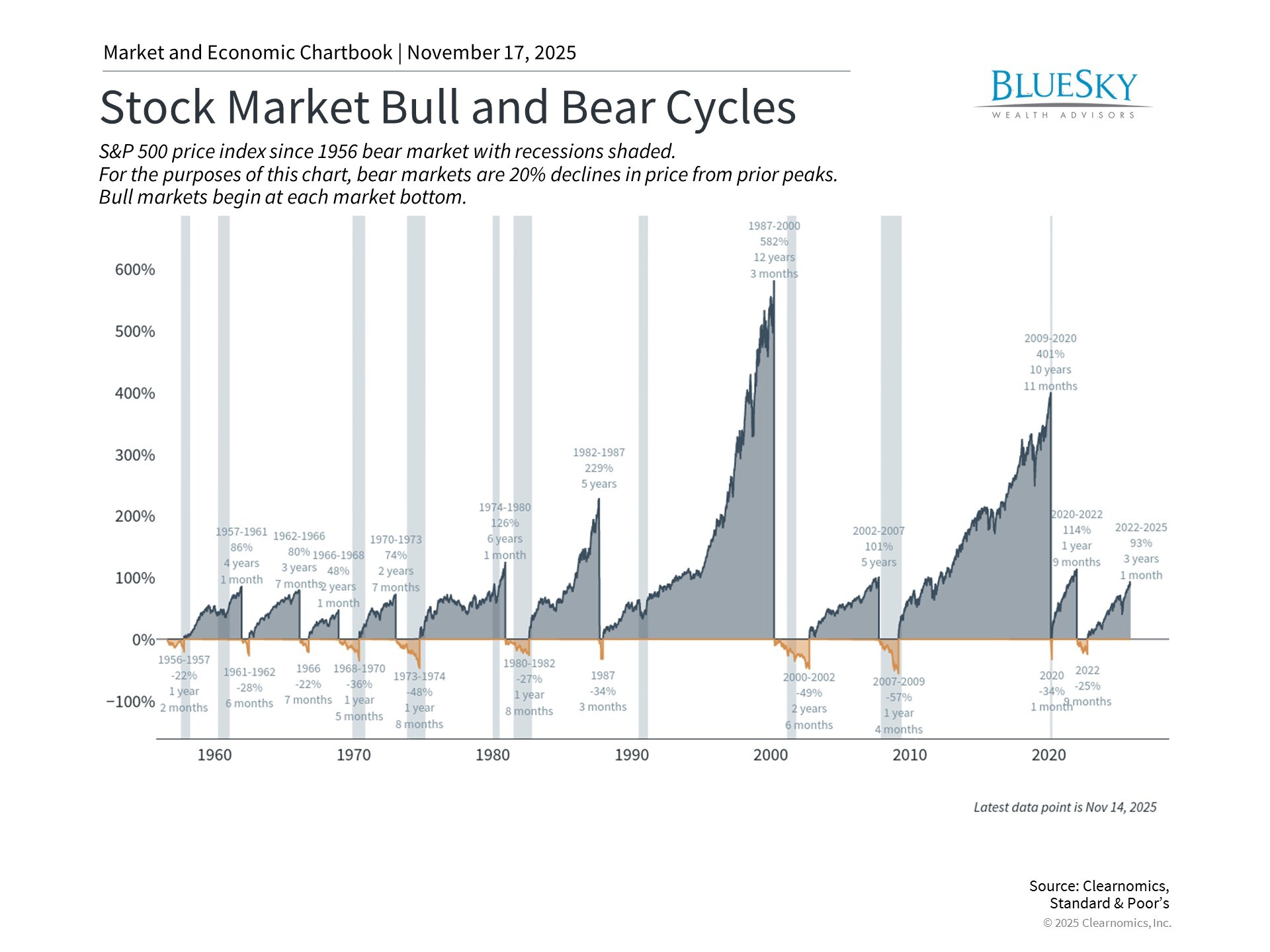
Understanding Recent Market Turbulence: Tariffs, Volatility, and Long-Term Investing
Understanding Recent Market Turbulence: Tariffs, Volatility, and Long-Term Investing
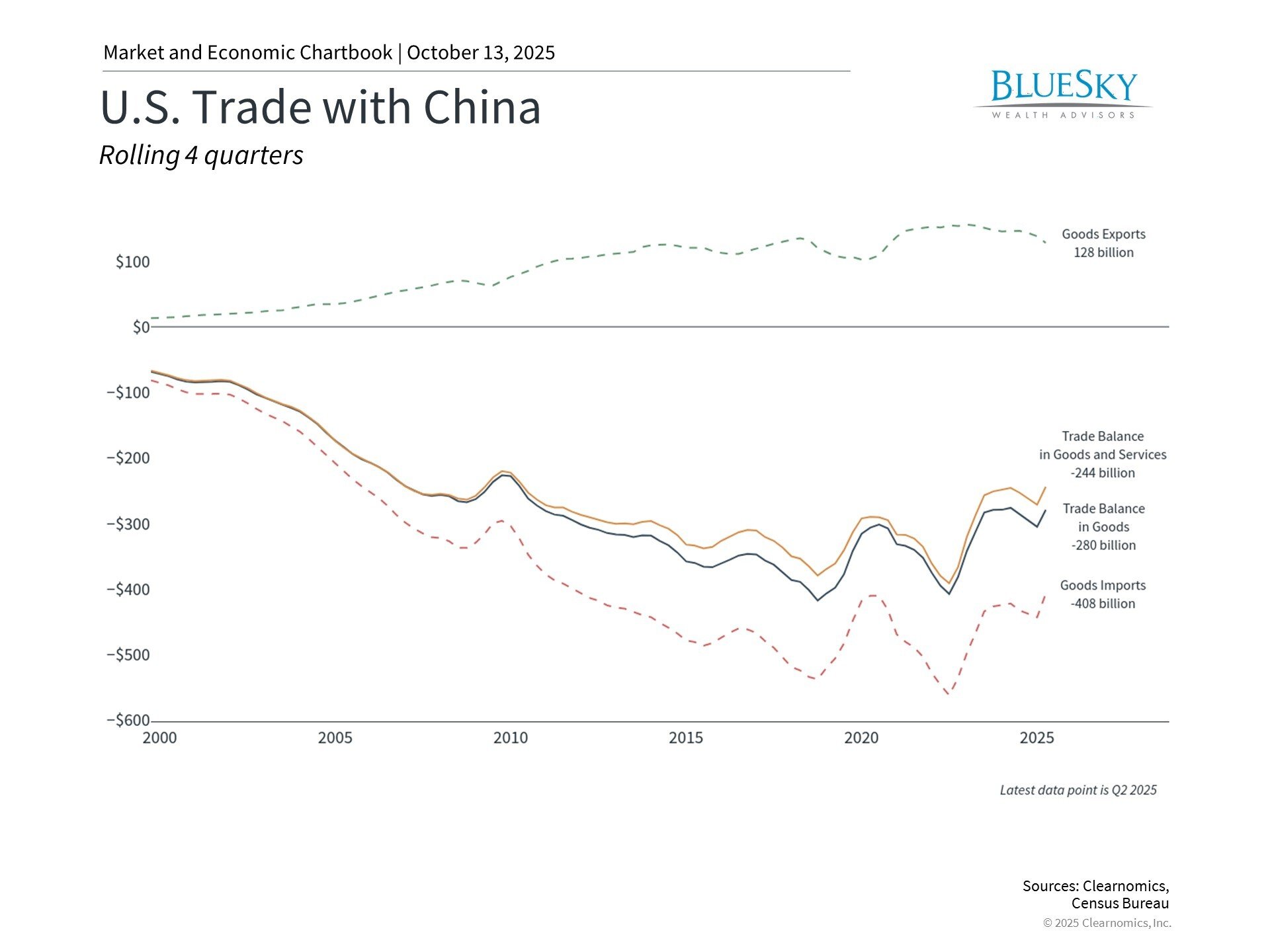
Markets recently saw their sharpest single-day drop since April as U.S.-China trade tensions intensified over rare earth materials and tariff policies. Though the selloff concerned many investors, markets rebounded quickly after the White House adopted a more conciliatory tone on trade matters. For those with long-term investment horizons, these fluctuations may seem familiar following a stretch of relatively stable market conditions.
Even with tariff-related uncertainty throughout the year, markets have delivered impressive results, with the S&P 500, Nasdaq, and Dow all posting double-digit percentage returns. Fixed income has also contributed positively to portfolios, as the Bloomberg U.S. Aggregate Index has risen 6.7%, marking an exceptionally strong year for bonds. Global markets have exceeded U.S. performance, with developed and emerging markets advancing 21.9% and 27.0%, respectively. Given this backdrop, it's crucial not to allow one difficult trading session and its accompanying negative media coverage to influence investment strategy.
Rather, market fluctuations should reinforce the understanding that near-term volatility is an inherent aspect of investing, and sustaining a long-term outlook continues to be fundamental to achieving financial objectives. Recognizing the factors behind market reactions and ensuring appropriate portfolio diversification can help investors remain committed to their extended-horizon goals.
Recent trade friction and the role of rare earth materials

Recent market turbulence stemmed from China's new export limitations on rare earth materials, which prompted the White House to threaten an additional 100% tariff on Chinese products beyond current duties. This exchange represents a continuation of the ongoing back-and-forth that has generated uncertainty for both investors and businesses throughout the year. Encouragingly, the White House has subsequently appeared to soften these threats and suggested that discussions could occur in upcoming weeks.
What exactly are rare earth materials and why have they become central to the tariff dispute? Unlike many other imports to the U.S., rare earth materials are predominantly sourced from China. Though these elements are not actually scarce from a geological standpoint, China has developed substantial mining and refining infrastructure over multiple decades, exceeding all other nations. These elements are essential inputs for numerous high-technology products including smartphones, electric vehicles, batteries, defense systems, and sophisticated electronics.
Given these factors, rare earth materials constitute one of China's most significant leverage points with the U.S. and the international community regarding trade and diplomatic matters. Current estimates indicate that China controls roughly 70% of worldwide rare earth production and close to 90% of refining capacity, establishing supply chain dependencies for other nations. While the U.S. maintains reserves of rare earth materials and has issued executive directives to expand domestic production, such efforts require considerable time.
Discussions surrounding rare earth materials represent just one element of the administration's broader trade approach with China. As illustrated in the chart above, the U.S. maintains a substantial trade deficit with China, and narrowing this gap while promoting domestic manufacturing has been among the administration's political priorities.
The outcomes thus far have been varied - though some manufacturing has relocated to the United States and new investment commitments have been announced, supply chains cannot transform immediately. The recent softening in the labor market has compounded challenges: according to the August employment report, manufacturing employment had decreased by 78,000 positions this year.
For investors, determining whether new tariff announcements should be interpreted literally or as negotiating tactics proves difficult. This ambiguity can trigger rapid sentiment changes and market movements. Therefore, it's essential to avoid overreacting to news reports and allow circumstances to evolve while concentrating on longer-term patterns. This principle held true during the initial trade conflict in 2018 and 2019, and investors who panicked earlier this year would have foregone the rapid market rebound.
Market uncertainty has increased following a quiet period

Recent market activity has elevated uncertainty and volatility levels. This development is understandable given investor concerns about the market's forward price-to-earnings ratio hovering around 22.5x and questions regarding the durability of the artificial intelligence stock rally.
While comprehending market drivers is valuable, historical evidence demonstrates that volatile periods frequently present the most attractive investment opportunities. Near-term anxieties often produce more favorable valuations, which subsequently benefit long-term portfolios. The fact that investing during turbulent times is difficult is precisely why investors with the discipline to do so are typically rewarded.
The accompanying chart illustrates the connection between the VIX index, which measures stock market volatility, and the S&P 500's performance over the following year. Historically, VIX spikes have frequently preceded robust forward returns, as these moments coincide with widespread investor fear about market entry or premature selling. This pattern reveals how detrimental overreacting to market swings can be.
Strong market performance despite negative sentiment

Though the 2.7% decline on October 10 ranked as the fourth worst trading day of the year for the S&P 500, maintaining proper context is equally important. The accompanying chart demonstrates that market corrections of 5% or greater occur routinely, even during years with positive overall returns. While this year has seemed volatile, the actual number of pullbacks has been fairly typical when measured against market behavior over the past 45 years. Indeed, the market has exceeded expectations this year with the S&P 500 climbing 31.5% from its April "Liberation Day" low, recording over 30 new all-time highs thus far.
The key takeaway is not that markets consistently advance without interruption, as they clearly do not. Rather, it's that episodes of market uncertainty are both typical and anticipated, and investors should always be prepared for short-term turbulence. Resisting the urge to fixate on every new development that could potentially disrupt markets is among the most important factors in achieving long-term financial success.
The bottom line? Brief episodes of market volatility can be unsettling but represent a normal and expected feature of investing, particularly as U.S.-China trade tensions persist. Historical evidence indicates that periods of elevated uncertainty, though uncomfortable, frequently create the most compelling opportunities for patient investors.
BlueSky Disclosures
Copyright (c) 2025 Clearnomics, Inc. All rights reserved. The information contained herein has been obtained from sources believed to be reliable, but is not necessarily complete and its accuracy cannot be guaranteed. No representation or warranty, express or implied, is made as to the fairness, accuracy, completeness, or correctness of the information and opinions contained herein. The views and the other information provided are subject to change without notice. All reports posted on or via www.clearnomics.com or any affiliated websites, applications, or services are issued without regard to the specific investment objectives, financial situation, or particular needs of any specific recipient and are not to be construed as a solicitation or an offer to buy or sell any securities or related financial instruments. Past performance is not necessarily a guide to future results. Company fundamentals and earnings may be mentioned occasionally, but should not be construed as a recommendation to buy, sell, or hold the company's stock. Predictions, forecasts, and estimates for any and all markets should not be construed as recommendations to buy, sell, or hold any security--including mutual funds, futures contracts, and exchange traded funds, or any similar instruments. The text, images, and other materials contained or displayed in this report are proprietary to Clearnomics, Inc. and constitute valuable intellectual property. All unauthorized reproduction or other use of material from Clearnomics, Inc. shall be deemed willful infringement(s) of this copyright and other proprietary and intellectual property rights, including but not limited to, rights of privacy. Clearnomics, Inc. expressly reserves all rights in connection with its intellectual property, including without limitation the right to block the transfer of its products and services and/or to track usage thereof, through electronic tracking technology, and all other lawful means, now known or hereafter devised. Clearnomics, Inc. reserves the right, without further notice, to pursue to the fullest extent allowed by the law any and all criminal and civil remedies for the violation of its rights.

